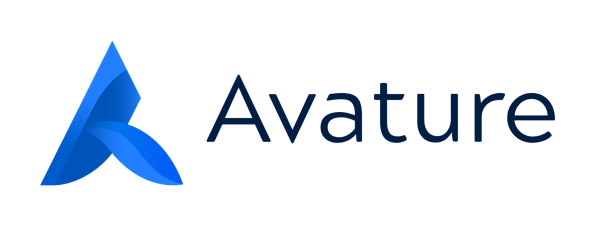How the pandemic ushered HR into a strategic role (and what this means for the function’s future)
SHARE THIS ARTICLE

The benefits of connecting HR with the overall business strategy have become more prevalent in recent years.
We’ve witnessed this with the rise of the increasing participation of chief human resource officers (CHRO) in executive decisions. With the pandemic serving as a catalyst for this change, we’re now looking at a future where HR could consolidate in a much more influential role.
COVID as a catalyst for change
These themes were outlined in a recent discussion with Avature founder and chief executive, Dimitri Boylan. HR has been struggling to get more involved in strategic decision-making for years, he noted, especially because of the function’s reputation of being a back-office administrator. The talent market reconfiguration that had begun even before the pandemic, and then the pandemic itself, have helped propel HR professionals to the forefront of executive decision-making.
“HR has been struggling to get to the executive level and the board level for many years. I think that COVID-19 actually helped them get right up at the table because it was really a human resources crisis and the fact that the workforce was going to work from home put the CHRO in the board meetings and I think the right ones will manage to stay there,” said Boylan.
“COVID-19 was a catalyst. I think there were a lot of other factors that were leading to bringing HR into the strategic domain of the company. It started with the Baby Boomers retiring. That was the beginning of it. Boomers are mostly retired now. But then the generational behaviour shift and generally the shift to tech, the shortage of tech people and of female STEM students coming out of school. You had a lot of issues that were making HR more talked about at the board level, Boylan added.
An all-new world
By becoming active participants in C-level conversations and moving away from the transactional behaviour that used to define the function, HR needs to rethink and redesign the way it operates.
“HR has to step up and recognise that they're in a different domain right now and that the way you operate is very different. A lot of times, the HR department had their conversations with the CFO. Well, the CFO's point of view is very financial. The CFO will tell you it's very strategic. It's strategic from a financial perspective. But the types of conversations you have with the CEO and with the board are very different than the conversations you have with the CFO,” Boylan commented.
“Now, the CHRO is in an interesting spot. I always say to them, ‘it's a great time to be a CHRO, but it's a double-edged sword, because the pressure is pretty high.’ The behaviour has to be slightly different. You have to be very vision-oriented when you meet with board-level people and they really focus on how solid your vision is. They get very nervous when they don't see a vision,” he said.
We’ve entered a new world in business operations where unique opportunities and challenges are constantly arising. With the acceleration in technological advancement, organisations are making it a top priority to have a digitised workforces that can harness technology to drive business outcomes. This causes the onus to often be placed on HR departments as they are responsible to cater for this change by bringing in the talent necessary to execute a vision.
Boylan explained: “If you look at the tech industry, the part of HR that the tech leadership was mostly concerned with was actually the recruiting part. And very often they pulled that out of HR. Certainly on the West Coast of the United States, they had a habit of doing that because the tech talent was defining the product and really defining the ability of the company to succeed.”
Workforce planning was another topic that came up during the conversation, related to the pressure to build more digital-savvy workforces. Because HR has a deep understanding of the labor market and the skills that are (or aren’t) available, its input is fundamental in shaping a successful business strategy.
“I was having this discussion recently with some people that are high-level consultants and they were saying, the workforce planning is really being done without HR. And the problem with that is you really can't plan if you don't understand the labour market and what's available and what's not available. It's very risky to plan for what you want to do. When you create a box and you think it's going to get filled and it's not going to get filled. There's nobody going to be in that job. The people don't have the skill sets.”
Since most companies, if not all of them, are undergoing profound digital transformations, the conversation swiftly moved into how skill sets are radically changing right now. The rise of AI is an example of this, as more employers seek people with AI-oriented skills.
“So, companies are doing this digital transformation. And the digital transformation is to have the company operate in a different way and to be more technical in nature. So, you are trying to shift the capabilities of your workforce and there's no single path to that,” Boylan commented.
“You can't just go and hire a bunch of new people that are technical. There aren't enough available. You can't just snap your fingers and have people that are not so technical become very technical. So, you need a very nuanced and sophisticated solution today if you want your company to become more competitive through the use of technology. And that can't be accomplished without a muscular HR organisation,” he concluded.
This reinforces just how important it is in the modern workforce planning to give HR a seat at the decision-making table.
Interestingly, HR is now at the forefront of organisations’ innovation capabilities. But the fact that HR itself is transforming means that the function needs to drive innovation internally as well. Due to this, the links between HR and technology have intensified.
“HR has not been described as the epicentre of innovation inside of companies over the past 50 years. At the same time, HR has to be innovative to ensure that the company becomes competitive in the future, because it's going to be based on the human capital that you get in the organisation. And so, I think that's probably one of the areas where HR is struggling with the confidence to be innovative,” Boylan commented.
“And remember, it's difficult because a lot of what you're doing in terms of innovation relates to technology. You can't really innovate in a company without having some good understanding of how to use the technology that's available to do the innovation. So, HR needs some very good partnerships with either tech providers or the IT or the CIO in order to get what they need done,” he added.
Challenges
As with any change, there are challenges that need to be overcome. As Boylan noted, “it would be foolish to gloss over the fact that there is a challenge with how HR wants to operate and how the IT organisation is operating.”
Many organisations have consolidated technology around one or two providers, especially in the enterprise software space. This approach has not only slowed their ability to innovate and be agile in the market, but also prevented them from providing the type of technology that the HR organisation wants.
Going forward, Boylan recognises the increasingly important partnership between the CHRO and the chief information officer (CIO), as the collaboration between these two areas can help ensure that the vision and the people are aligned with the tech advancements.
He concluded: “There's no doubt that it's got to be an even partnership. They've got to be at the table together, working together and respecting each other's objectives.”


